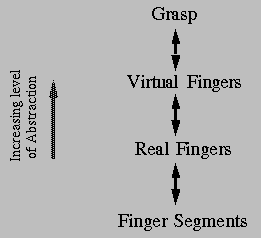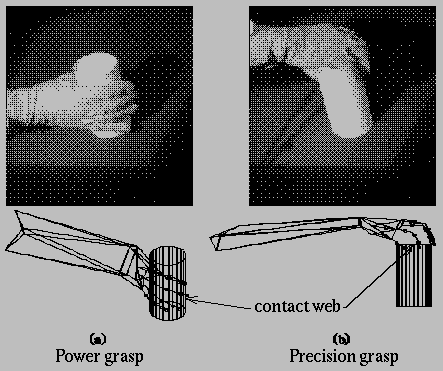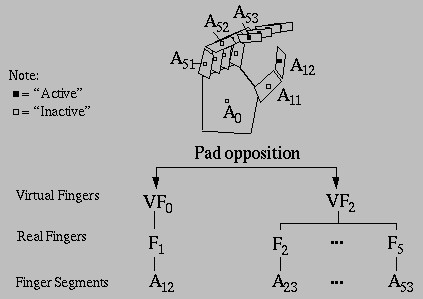

The lowest level in the hierarchy contains information on the location of the finger segments which compose its respective fingers. The connection between the real fingers and virtual fingers are established using a mapping that compares object normals at the finger segment contacts. Finally, the highest level of the hierarchy is the identity of the grasp used by the human operator in the task.
Two examples of grasps and their associated grasp abstraction hierarchies are illustrated below.

In example (a), the grasp has been identified as Type 2 `Coal-hammer' cylindrical grasp (a grasp in which the thumb is abducted and the thumb is touching the surface of the object - see the section under grasp recognition). (A part is "active" if it touches the object and "inactive" otherwise.)

In example (b), the grasp has been identified as a five-fingered precision (disc) grasp. (The RMS error for circular fit is 0.40 cm while the RMS error for prismatic fit is 0.92 cm.)
